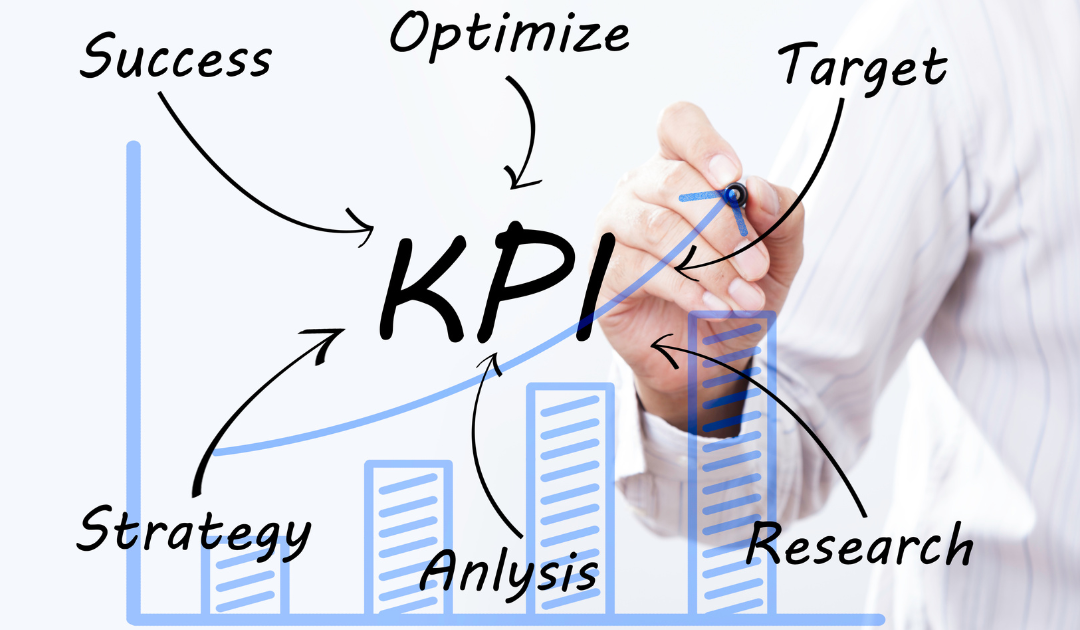Key Highlights
- Leading KPIs are crucial for predicting future business performance and driving growth.
- Choosing the right leading KPIs involves focusing on specific business objectives and identifying measurable factors that influence desired results.
- Setting clear objectives, time frames, and benchmarks for each KPI is essential for effective performance tracking.
- Regular monitoring and analysis of leading KPIs provide valuable insights to make informed, strategic decisions.
- By understanding and utilizing leading KPIs, small businesses can proactively adapt strategies, enhance operational efficiency, and ultimately achieve sustainable growth.
Introduction
In business growth, it’s important to make smart choices based on information. This is where key performance indicators (KPIs) help. KPIs give clear measurements of important parts of your business. They guide you to reach your goals and help your business grow over time. Knowing the various types of KPIs, especially leading indicators, can greatly improve your decision-making and overall business performance.
The Importance of Leading KPIs for Small Business Growth
While all KPIs are valuable, leading indicators are especially important for small businesses that want to succeed. Unlike lagging indicators, which show past performance, leading indicators help predict future results. They give businesses the chance to spot trends, tackle issues early, and take advantage of new opportunities.
When small businesses align their leading indicators with their business objectives, they gain a strong edge. It’s like having a crystal ball that helps you see changes in what customers want, market trends, or how well your operations run. This forward-thinking method helps in making smart choices. It allows better use of resources, improved planning, and can lead to lasting growth.
Defining Leading KPIs and Their Impact
Leading KPIs are tools that help predict how well your business will do in the future. Unlike lagging KPIs, which look at past results, leading KPIs focus on actions and factors that are expected to impact future performance. This forward-looking approach is important for managing performance and improving your business.
Leading indicators find and keep track of specific activities or numbers that are linked to the goals of your business. For instance, if you want to boost customer retention, a good leading KPI could be customer satisfaction scores or how engaged customers are with your products.
By watching these leading indicators, businesses can fix issues before they grow, improve their plans, and achieve better business performance overall.
Why Leading KPIs Matter More Than You Think
Imagine being able to see changes in the market, understand what customers want, and find possible problems before they affect your business. This is what leading KPIs can do for you. They give you the vision to adjust and succeed in today’s ever-changing business world.
Also, leading KPIs encourage a culture of constant improvement. When businesses focus on what helps them succeed in the future, they can find ways to do better and measure how their efforts help. Whether it is making the customer experience better, improving operations, or increasing sales, leading KPIs give important insights. These insights help businesses make smart choices and build a habit of growing proactively.
Identifying Your Business’s Key Leading KPIs
Choosing the right leading KPIs is crucial for good business management. Instead of using basic metrics, you should find KPIs directly related to your business objectives and industry.
Start by clearly defining your main goals. Understand the things that affect those goals. Next, determine the measurable activities that influence those factors. Keep in mind that what works for one business may not work for another. The aim is to find KPIs that are specifically relevant to your situation and growth plans.
Criteria for Selecting the Right Leading KPIs
When picking key performance indicators (KPIs), it is important to create a plan that fits your needs. Here is how to make sure the metrics you choose help reach your overall goals:
- Relevance to Business Goals: Each KPI should connect directly to a specific business goal. For example, if you want to boost customer satisfaction, look at metrics like customer reviews or the Net Promoter Score (NPS).
- Measurability and Data Availability: The KPIs you pick must be measurable and easy to track. Make sure you have good data sources to follow and analyze these metrics. For instance, your sales team can easily count the number of sales calls they make, so it becomes a good metric.
- Actionability and Influence: Choose leading indicators that your team can influence with their actions. It is important to pick metrics you can manage. For example, a KPI about the weather does not make sense because you cannot control it.
Examples of Effective Leading KPIs in Action
Here are some examples of how to use different key performance indicators (KPIs) for various business goals:
To increase sales and grow revenue, you can look at these KPIs:
- Number of Sales Calls/Meetings: This shows how much effort the sales team makes to find leads and close deals. It helps measure possible revenue growth.
- Website Traffic and Lead Generation: Watching website traffic from qualified leads gives helpful information about how well marketing campaigns are doing and their chance to boost sales.
For improving customer retention, these leading indicators are important:
- Customer Satisfaction Scores (CSAT/NPS): These numbers measure how happy customers are and their loyalty. They help show where there might be issues that lead to losing customers and how to improve the experience.
- Product Engagement Metrics: Keeping track of how users interact with your product, what features they use, and their feedback can show customer satisfaction and the chance of keeping customers for a long time.
Setting Up Leading KPIs for Success
Setting strong KPIs is just the start; helping them succeed is also very important. You need a system that makes sure your KPIs lead to real actions and help reach your business goals.
Begin by writing down each KPI clearly. Explain what it means, how to calculate it, and how it relates to a specific business goal. Set realistic but challenging targets or benchmarks for each KPI. This will give your team a clear path and a goal to aim for.
Establishing Clear Objectives for Each KPI
Defining clear goals for each KPI is important. It helps you track progress and make real improvements. Start by saying what you hope to achieve with your chosen KPI. For example, if you are looking at social media engagement, your goal could be “to increase brand awareness and generate leads.”
Then, set a specific time frame for reaching this goal. This gives your team a clear deadline to work toward. It also helps you check progress during that time. Whether it’s a month, a quarter, or a year, having a time frame adds urgency and accountability.
Finally, link the KPI goal to its effect on the bottom line. This shows how reaching your goal supports your business goals. Whether it’s better revenue, happier customers, or better efficiency, this step is key.
Tools and Techniques for Monitoring Leading KPIs
Effective monitoring of leading KPIs relies on utilizing the right tools and techniques. While spreadsheets can be helpful, consider investing in dedicated KPI dashboard software or integrating them within your existing business intelligence tools.
Visualizing your KPIs through clear charts and graphs provides an instant overview of your performance. A well-structured dashboard facilitates easy data interpretation and allows for quick identification of trends and areas requiring attention. For example, a sudden dip in website traffic becomes instantly noticeable on a line graph.
| Tool/Technique | Description |
| KPI Dashboard Software | Real-time data visualization, customized reports, automated alerts, and data integration with various platforms. |
| Spreadsheets | Simple tracking and basic visualization for smaller datasets, requiring manual updates and calculations. |
| Business Intelligence (BI) Tools | Comprehensive data analysis, trend prediction, and forecasting capabilities, often integrating with various data sources. |
Strategies to Improve Leading KPI Performance
Improving the performance of key performance indicators (KPI) requires a smart and active plan. Just watching these markers isn’t enough. You must use the information you get to make clear changes that lead to real improvements.
The focus should be on regularly reviewing your KPI data. Look for problems or chances to do better. Then, create and carry out strategies to fix those issues. This could mean making your marketing plans better, improving sales steps, boosting customer service, or updating product features based on what users say.
Analyzing Data to Drive Business Decisions
Data analysis of important KPIs gives you valuable insights. These insights can greatly affect your strategic decisions and overall revenue. When you check your KPI trends often, you can spot patterns, unusual changes, and chances to improve, which you might miss otherwise.
For instance, if email open rates keep going down, it may be time to change your email marketing strategy or update your subscriber list. Also, if you see a big increase in website traffic from one referral source, it might be a good marketing channel to invest more money into.
By looking at your leading KPI data regularly and finding useful insights, you can make smart, data-driven decisions. This helps to improve business operations, enhance customer experience, and boost revenue growth.
Adjusting Strategies Based on KPI Analysis
Don’t be afraid to change your plans based on what your main KPIs show you. The path to getting better means always improving your way of doing things to match your changing business goals and what’s happening in the market.
For example, if your sales team is making fewer sales calls per week than planned, it is time to find out why. You might need to offer extra training, use a new CRM system to help them work better, or change how you check leads.
Leading KPIs give you useful information. It is up to you to understand what they mean and act on them. This ongoing process of checking, changing, and improving is important for staying on top and making sure your business strategies match your goals all the time.
Conclusion
In conclusion, knowing how to use leading KPIs is very important for small businesses to grow sustainably. By choosing and tracking the right leading KPIs, businesses can make smart decisions that help them succeed. Looking at data and changing strategies based on KPI insights is key to improving performance. Small businesses should set clear goals for each KPI and use tools to monitor them well. It is important to understand the difference between leading and lagging KPIs for good planning. If you want to learn more about using leading KPIs for your business, think about joining our Strategy Alignment and Execution membership where we dive deep into understanding KPIs and more to run and grow your business.
Frequently Asked Questions
What Makes a KPI ‘Leading’ vs. ‘Lagging’?
A leading indicator is something like website traffic or sales calls. It helps predict how the business will do in the future. On the other hand, a lagging indicator is like revenue or profit. These measure how the business did in the past and show the results of actions that have already taken place.
How Often Should Small Businesses Review Their Leading KPIs?
The best review cycle depends on your business and the choices you make. A weekly schedule is often suggested for performance management. This lets you make quick changes and keeps your sales team and other departments on track with your current goals.
Can Leading KPIs Predict Future Business Growth?
Leading KPIs give useful information. This helps businesses think about their future success and possible revenue growth. Although they do not guarantee what will happen, they help align actions with business objectives. They also help understand what might be coming next.
What Are Some Common Mistakes in Selecting Leading KPIs?
Common mistakes in choosing key performance indicators (KPIs) include picking metrics that do not relate to your goal setting. It’s also a problem when you focus on vanity metrics instead of those that lead to the desired result. Finally, not tracking the right metric for customer retention can be a major issue.
How Do Leading KPIs Differ Across Industries?
Leading KPIs change from one industry to another because each has its own focus and way of working. Customer satisfaction and revenue growth are important everywhere. However, the exact ways to measure these factors, along with retention and overall revenue, can be quite different. This is mostly due to unique industry benchmarks and how customers behave.


